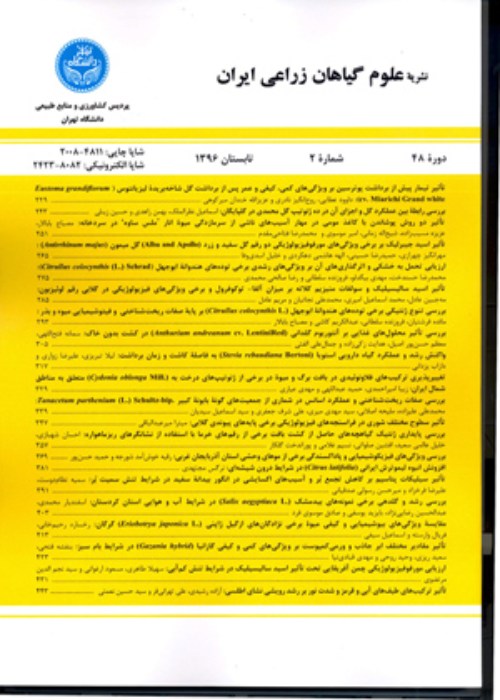Response of Hulled Tetraploid Wheats to Nitrogen Deficit Stress in Comparison to Macaroni Wheat
Abstract:
In order to study the effect of nitrogen level on physiological characteristics, grain yield and yield components of tetraploid wheat genotypes, a split plot Randomized Complete Block Design field experiment with three replications was conducted in 2007 at Research Farm of Isfahan University of Technology. Four levels of nitrogen fertilizer (20, 80, 140 and 200 kg/ha) were chosen as main plots and eight tetraploid wheat genotypes, consisting a group of six hulled wheat (Singerd, Shahekord, Jooneghan, Khooygan, Zarneh and Ozonbolagh), T. turgidum subspp. dicoccum, and a group of two free-threshing durum genotypes (Shoa and Ostagata), T. turgidum subspp durum, as sub plots. Measurements were made on physiological characteristics such as LAI, chlorophyll fluorescence and leaf chlorophyll content. After harvest, yield and yield components, total dry weight, harvest index and percent of protein were evaluated. Results showed that there were significant differences between nitrogen levels in LAI, grain yield and protein content. There were statistically significant differences between genotypes for all measured characteristics except for total dry matter, chlorophyll B and protein content. Significant interactions of genotype × nitrogen were detected for LAI, chlorophyll content, ear per m2, number of grain per ear, yield and grain protein. The interactions between groups and nitrogen on LAI, number of grain per ear, grain yield and protein content were significant. Maximum 1000 grain weight (45.2g), number of grain per ear (36.4), grain yield (5028.8 kg/ha) and harvest index (28%) were seen in durum groups and maximum leaf chlorophyll content (0.097 mg/ml), number of ear per m2 (941.2) and protein content (16%) were observed in hulled groups of genotypes. All of the measured characteristics except for number of grain per ear, grain yield and harvest index decreased with nitrogen deficit in durum wheat genotypes. Grain yield and number of ear per m2 for hulled wheats increased with decreasing nitrogen level. It was concluded that at least with hulled wheat group used here, the latter wheats could be more resistant to environmental constrains such as nitrogen deficit, compared to the modern durum genotypes. In addition, hulled tetraploid genotypes may have the potential for food producing purposes in marginal and stressfull conditions.
Language:
Persian
Published:
Iranian Journal of Field Crop Science, Volume:42 Issue: 2, 2011
Page:
285
magiran.com/p907965
دانلود و مطالعه متن این مقاله با یکی از روشهای زیر امکان پذیر است:
اشتراک شخصی
با عضویت و پرداخت آنلاین حق اشتراک یکساله به مبلغ 1,390,000ريال میتوانید 70 عنوان مطلب دانلود کنید!
اشتراک سازمانی
به کتابخانه دانشگاه یا محل کار خود پیشنهاد کنید تا اشتراک سازمانی این پایگاه را برای دسترسی نامحدود همه کاربران به متن مطالب تهیه نمایند!
توجه!
- حق عضویت دریافتی صرف حمایت از نشریات عضو و نگهداری، تکمیل و توسعه مگیران میشود.
- پرداخت حق اشتراک و دانلود مقالات اجازه بازنشر آن در سایر رسانههای چاپی و دیجیتال را به کاربر نمیدهد.
In order to view content subscription is required
Personal subscription
Subscribe magiran.com for 70 € euros via PayPal and download 70 articles during a year.
Organization subscription
Please contact us to subscribe your university or library for unlimited access!


